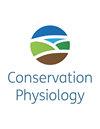Can blubber steroid hormone measurements reveal reproductive state in narwhals?
IF 2.6
3区 环境科学与生态学
Q2 BIODIVERSITY CONSERVATION
引用次数: 0
Abstract
Hormone measurements from blubber samples have been used to assess reproduction in cetaceans and are a widely applicable technique, as blubber samples are often collected from necropsied individuals and biopsies are readily collected from live, free-swimming cetaceans. Many studies have assessed reproduction in cetaceans based on blubber hormone concentrations but few have validated their findings with individuals of known reproductive state. The objectives of this study were to use a unique dataset of paired female narwhal (Monodon monoceros) reproductive tracts and blubber samples to: (1) determine narwhal reproductive state based on ovarian analysis; (2) evaluate progesterone, estradiol, testosterone and corticosterone concentrations in paired blubber samples to validate the use of blubber hormone measurements as a technique to assess reproductive state in narwhals; and (3) determine narwhal reproductive rates using reproductive tract and hormone analyses. Female narwhals with complete reproductive tracts or known ages (n = 13) were categorized as: pregnant (fetus or placenta present; n = 5), active (at least one corpus luteum present; n = 2), resting (at least one corpus albicans present; n = 3) or immature (absence of corpora lutea and albicantia or age <8; n = 3), and eight individuals were classified as unknown due to incomplete reproductive tracts. Estradiol, testosterone, and corticosterone concentrations were not useful for assessing reproductive state; however, progesterone concentrations were higher in pregnant narwhals (432.66 ± 182.13 ng/g) than active (1.57 ± 0.42 ng/g), resting (1.52 ± 0.87 ng/g) and immature (1.44 ± 0.71 ng/g) individuals, validating the use of blubber progesterone concentrations in determining pregnancy in narwhals. Using a progesterone threshold for pregnancy, determined in this study, we were able to classify three individuals with incomplete reproductive tracts as pregnant and identify a potential impending pregnancy loss. The results from this study suggest that blubber progesterone concentrations are useful for assessing pregnancy and can help inform reproductive rates of narwhal populations.脂肪类固醇激素测量能否揭示独角鲸的生殖状态?
鲸脂样本中的激素测量值被用于评估鲸目动物的繁殖情况,这是一项适用范围很广的技术,因为鲸脂样本通常是从死亡个体身上采集的,而活体组织切片则很容易从自由游动的活体鲸目动物身上采集。许多研究根据鲸脂激素浓度评估鲸目动物的繁殖情况,但很少有研究用已知繁殖状态的个体验证其结果。本研究的目的是利用成对雌性独角鲸(Monodon monoceros)生殖道和鲸脂样本的独特数据集,以便(1)根据卵巢分析确定独角鲸的生殖状态;(2)评估配对鲸脂样本中孕酮、雌二醇、睾酮和皮质酮的浓度,以验证使用鲸脂激素测量作为评估独角鲸生殖状态的技术;以及(3)利用生殖道和激素分析确定独角鲸的生殖率。具有完整生殖道或已知年龄的雌性独角鲸(n = 13)被分为:怀孕(存在胎儿或胎盘;n = 5)、活跃(至少存在一个黄体;n = 2)、静止(至少存在一个白体;n = 3)或未成熟(无黄体和白体或年龄为<8;n = 3),另有 8 只个体因生殖道不完整而被归类为未知。雌二醇、睾酮和皮质酮的浓度对评估生殖状态没有帮助;但是,怀孕的独角鲸的孕酮浓度(432.66 ± 182.13 ng/g)高于活动的(1.57 ± 0.42 ng/g)、静止的(1.52 ± 0.87 ng/g)和未成熟的(1.44 ± 0.71 ng/g)个体,这验证了使用鲸脂孕酮浓度来确定独角鲸是否怀孕。利用本研究确定的怀孕孕酮阈值,我们能够将三只生殖道不完整的个体归类为怀孕个体,并识别出可能即将发生的妊娠损失。这项研究的结果表明,鲸脂孕酮浓度可用于评估怀孕情况,并有助于了解独角鲸种群的繁殖率。
本文章由计算机程序翻译,如有差异,请以英文原文为准。
求助全文
约1分钟内获得全文
求助全文
来源期刊

Conservation Physiology
Environmental Science-Management, Monitoring, Policy and Law
CiteScore
5.10
自引率
3.70%
发文量
71
审稿时长
11 weeks
期刊介绍:
Conservation Physiology is an online only, fully open access journal published on behalf of the Society for Experimental Biology.
Biodiversity across the globe faces a growing number of threats associated with human activities. Conservation Physiology will publish research on all taxa (microbes, plants and animals) focused on understanding and predicting how organisms, populations, ecosystems and natural resources respond to environmental change and stressors. Physiology is considered in the broadest possible terms to include functional and mechanistic responses at all scales. We also welcome research towards developing and refining strategies to rebuild populations, restore ecosystems, inform conservation policy, and manage living resources. We define conservation physiology broadly and encourage potential authors to contact the editorial team if they have any questions regarding the remit of the journal.
 求助内容:
求助内容: 应助结果提醒方式:
应助结果提醒方式:


